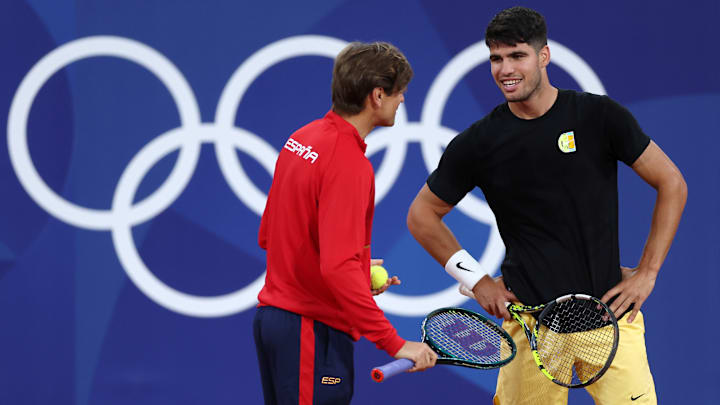We are only days away from the 2024 Summer Olympic Games in Paris. On July 27, the tennis tournament will begin, featuring a star-studded cast of participants.
This year, the competition will take place on clay at Stade Roland Garros in Paris, France, home of the French Open. Among the most famous venues in the world, it is a fitting establishment for what should be an exciting atmosphere.
Location aside, how does Olympic tennis compare to ATP/WTA rules and formatting we are accustomed to (if at all)? Are there differences between the transnational and conventional playing/viewing experience?
Here's everything you need to know about the upcoming Olympic tennis competition before the festivities in Paris begin.
What are Olympic Tennis rules? Explaining everything you need to know for Paris 2024
Olympic tennis has five events -- men's/women's singles/doubles, and mixed doubles. The size of each respective draw is listed as follows:
Olympic Tournament | Size of Field |
|---|---|
Women's singles | 64 |
Men's singles | 64 |
Women's doubles | 32 |
Men's doubles | 32 |
Mixed doubles | 16 |
A best-of-three-set structure determines an Olympic tennis match. Similarly to the ATP/WTA scoring system, a traditional tiebreak is played to seven points, though you must win by two. One player starts the conclusive game with a service. Afterward, the contestants alternate after every two serves.
In tennis, a cumulative point-based method typically determines a player's ranking. Alas, the outcome of the Olympics doesn't factor into the hierarchy, making it more about having pride in your native country than anything.
Per the International Tennis Federation (ITF), one must fulfill specific requirements to partake in the Olympics. Various prerequisites spanning from age, previous participation and being in "good standing" with the governing bodies of the sport weigh into eligibility.
Qualifying for the global tournament is a rigorous process and no easy feat. However, a country can't have more than 12 representatives (six men and six women) across the five competitions. Nonetheless, the host nation (in this case, France) gets one walk-on per contest.
Overall, not much separates an Olympic tennis outing from a standard affair. Regardless, the stakes escalate to new heights when players represent their homeland, setting up for a competitive event in Paris.
